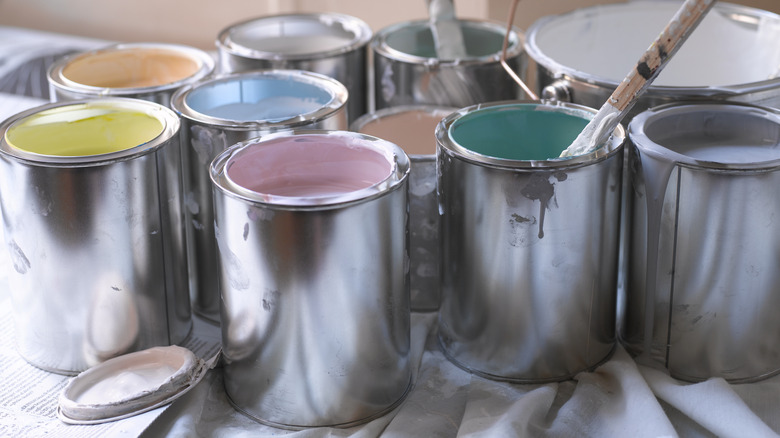The Genius Trick You Need To Test Paint Colors Before Committing To A Color
If you're in pre-paint mode and committed to the process, you might be seriously considering a wide range of colors. You're contending with decisions about what color you'll love living with day after day. But another factor is what your color looks like under different lighting conditions. How does it feel in full sunlight compared to how it reads when the light is either indirect or overcast? Does a particular color energize, calm, or irritate you? You can only figure this out by living with it. Painting your wall with swatch colors is a great start, but we have another idea: use contact paper.
There's something about contact paper — it's often patterned and has a light adhesive backing — that reminds us of the 1950s. It's absolutely still used today, though older generations used it even more frequently. People most often use it to line the bottom and sides of a cutlery drawer as well as the bottom of kitchen cabinets to protect surfaces — and choosing the best drawer liners depends on what you're protecting. The genius part is that contact paper also comes in clear, and you can paint it with your swatch colors.
How to test paint colors before committing
Contact paper is like the Post It Note of removable paper. The adhesive on the back is so light that it will not damage walls or other surfaces, and you can easily lift it off and reposition it in another area. So, gather your supplies. You'll need one roll of clear contact paper, all the paint colors you're about to audition, and a brush.
Cut out several large squares of contact paper; the bigger, the better. You might want to leave the adhesive on for now, lay them on a flat surface covered by a newspaper in case of paint spills, then paint each one with a different swatch color. Allow them to dry fully. Remove the backing and place the swatches on the wall you'll be painting.
After a few days of living with these colors, place them into another area of the room where the lighting is noticeably different. This is a wonderful way to make an informed decision. You might paint all the swatches at once, but instead of placing all the colors on the wall next to each other, consider living with them one at a time.
